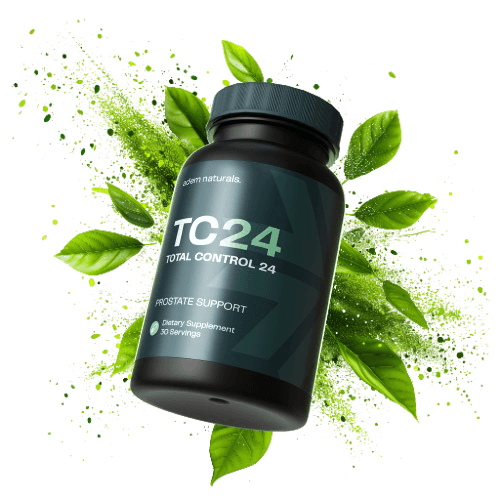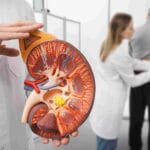
Table of Contents
Introduction – When Your Mouth is Headache Inducing
A toothache and headache — that all-too-familiar double whammy of pain that can ruin your whole day. You know how that throbbing tooth seems to send waves of discomfort right up to your temples? You’re not imagining things.
Yes, a toothache can definitely lead to headache, which creates a vicious cycle of pain that is hard to break. The link is in the complex web of nerves and muscles that traverses your face, head and jaw. When one part suffers, the others usually go down with it.
This link between oral health and overall health is deeper than many people realize. You might be thinking of the trigeminal nerve, temporomandibular joint (TMJ), nighttime teeth grinding and even dental infections that go unseen; all can act as invisible bridges between pain in your mouth and that in your head.
Recognizing this critical connection isn’t just an extra anyway – it’s vital for more accurate diagnosis and effective treatment. As you address the root cause behind your problems instead of only addressing the symptoms you may finally experience relief.
In this article, we’ll discuss seven of the most surprising connections between your toothache and headache that just might change the way that you manage pain from here on out.
The Trigeminal Nerve: Its Central Role
If you wish to talk about the relationship of tooth pain and headaches, it all boils down to one potent pathway, the trigeminal nerve. This illustrious nerve isn’t just a common neural transmission — it is the largest, most elaborate of the cranial nerves, a master road facilitator of sensation for your whole face.
The Sensory Command Center for Your Face
The trigeminal nerve divides into three separate pathways that carry sensations from:
- Your teeth, gums, and jaw
- The area beneath your eyes and in your forehead
- Your cheeks, nostrils, and upper lip
This vast network is why that cavity in your lower molar can register as pain behind your eye or across your temple. The nerve not only carries pain signals — it also controls the muscles that let you chew and has sensation for most of your face.
How Dental Issues Can Turn Into Headaches
When problems with your teeth emerge, they set off a chain reaction.
- A fractured tooth, cavity, or impacted wisdom tooth irritates nerve endings
- This irritation travels the trigeminal pathway
- Your brain occasionally misreads these signals as pain radiating from other regions innervated by the same nerve
- The result? A persistent headache that isn’t directly related to your tooth.
For some, this neural cross-talk can provoke migraines; dental issues can be unexpected triggers for debilitating headache attacks.
Realizing this connection is key to understanding why most headaches that have not responded to typical headache treatment for months or years are cured when the underlying dental disease is treated.
The Relationship Between Jaw Disorders and Headaches: TMJ Disorders
The elaborate hinge apparatus of your jaw may be the secret suspect behind that nagging headache and unknown tooth pain. The temporomandibular joint, or TMJ, is the point that connects your jawbone to your skull, and when this joint goes amiss, the consequences can echo throughout your head and mouth.
Understanding TMJ Disorders
Jaw problems (or TMJ disorders/TMD) refer to a group of disorders that affect the jaw joint, surrounding muscles, ligaments, and tissues. These disorders interfere with the fluid functioning of what ought to be one of the most frequently used joints in your body.
Classic symptoms include:
- Discomfort or tenderness in the jaw region
- Unusual clicking or popping sounds as you move your mouth.
- Pain or tenderness while chewing
- Jaw canting in open or closed positions
- Limited range of jaw movement
The Pain Connection: Everything Is Not Coincidence
There is robust research on the connection of TMJ issues and headaches. A thorough 2020 study published in The Journal of Headache and Pain, of over 40 thousand patients, discovered an astonishing 67.8% of TMD cases had headaches associated, versus 20.4% in the control group.
Another investigation, published in Pain Research and Management in 2022, tells a more revealing story, showing that 76% of patients who sought treatment for unexplained tooth pain who had no identifiable dental cause — were eventually diagnosed with TMJ disorders.
Lifestyle Factors That Exacerbate the Problem
All in all, modern life makes a perfect environment for TMJ issues:
- The Stress Response: Many people unconsciously clench or tighten jaw muscles when stressed. A study published in the Journal of Oral Rehabilitation found that patients scoring higher for stress were 3.8 times more likely to develop TMJ disorders and related headaches.
- Ergonomics: It can be how you sit at your workstation. A 2021 study showed that people with forward head posture caused by bad computer ergonomics, suffered from TMJ problems and associated head/tooth pain 43% more frequently.
Even faint headaches that lead to tooth sensitivity may indicate an underlying TMJ problem. The key takeaway? Both your headache and your toothache might not respond to traditional methods of treatment — and a TMJ assessment could uncover the actual source of your pain, allowing for both issues to be treated with one targeted intervention.

Teeth Grinding (Bruxism) — The Nighttime Grind That Leads to Daytime Pain
While you slumber, your jaw may be working hard. Bruxism—the medical term for grinding of the teeth—is thought to affect around 8-31% of adults according to the Journal of Oral Rehabilitation, and most people suffering from the condition are blissfully unaware of their nightly grinding until they awaken to the painful side effects.
The Link Between Grinding and Headaches
This unconscious grinding creates the perfect storm for morning misery. While sleep bruxism episodes, jaw muscles can exert up to 250 pounds per square inch of force — nearly ten times the force of normal chewing. A 2022 study published in the Journal of Headache Pain found that people with sleep bruxism were 3.4 times more likely to have frequent tension-type headaches than non-grinders.
Recognizing the Warning Signs
Your body has telltale signs of bruxism:
- Swelling, constant headache near the temples
- Sore jaw muscles upon waking
- Pain Sensitivity Or Pain Without Evident Dental Causes
- Pain or tenderness when chewing
- Clicking or popping of the jaw that can be heard
- A wearing pattern on tooth surfaces
Why It’s Often Misdiagnosed
Bruxism headaches are often confused for tension headaches, which can result in mismanagement and ineffective treatment strategies. In another clinical study in 2023 published in Cephalalgia, 41% of subjects initially diagnosed with chronic tension headaches showed significant nighttime bruxism on monitoring in sleep studies.
The key difference? Bruxism-related headaches most often feel their worst right upon waking, and then improve throughout the day, while classic tension headaches tend to get worse as the day goes on.
The Decades-Long Aftermath and How We Can Solve It
The nightly grind takes a serious toll if left untreated:
- Dental Damage: Harmed enamel, snapped teeth, and fatally ruined fillings
- Muscular Problems: Customary mandible weariness and sporadic muscle firmness
- Joint Issues: Risk of TMJ Disorders
The gold standard solution is a custom nightguard. In fact, a 2021 randomized controlled trial published in the Journal of Dental Research found that custom-fitted nightguards led to a 62% reduction in morning headache intensity and a 71% reduction in morning headache frequency in just three weeks of continuous use.
For the chronic headache sufferers out there, this can be the long sought after solution when nothing else has worked because you are under diagnosed for bruxism.
Dental Infections and Abscesses — How Oral Bacteria Wreaks Headache (and others)
An innocent enough toothache can become a real head ache when bacteria invade your dental tissues. Dental decay and untreated cavities also provide the ideal breeding ground for bacterial colonies, which can cause infections that spread pain far outside your mouth.
The Anatomy of Dental Abscess Collapse
An abscess is formed by the invasion of bacteria into the tooth’s pulp or surrounding tissues forming a pocket of pus that accumulates and creates pressure within a confined area. This pressure activates nearby nerve endings, transmitting pain signals that can take convoluted routes along neural pathways, forming pounding headaches that feel far removed from their actual sources.
Common Red Flags That Should Not Be Overlooked
When a headache is there too, it’s possible that a dental infection is involved:
- Severe, persistent toothache
- Bitter taste or foul breath
- Low-grade fever
- Intense pain upon biting or chewing
- Swollen gums or jaw
- Supportive pus surrounding a tooth or gum
- Sensitivity to hot or cold temperatures
The Dangerous Progression
Dental infections don’t stay localized if not treated. Both bacteria are capable of spreading through the facial planes and vascular systems and could be responsible for migraines, facial cellulitis, or even more serious complications like sepsis.
One particularly concerning complication is cavernous sinus thrombosis — a rare but serious condition in which infection spreads to the blood vessels at the base of the brain. In addition to severe headache behind one eye and dramatic fever spikes, warning signs are impaired eye movement.
Ongoing dental-triggered headaches are especially problematic because they’re so often dismissed as “just a headache,” when in reality, they are your body’s way of sounding the alarm that an infection needs to be treated by a professional care provider immediately.
Impacted Wisdom Teeth; What is the Tooth Affected?
Those pesky third molars in the back of your mouth — popularly referred to as wisdom teeth — are often late to arrive to the party, and they often cause trouble when they do. For many, there’s just not enough space for these latecomers to come in properly, leaving them stuck — “impacted” — underneath the gum line or up against neighboring teeth.
When Wisdom Teeth Get Stuck
Impacted wisdom teeth set off a chain reaction of issues that go well beyond the back of your mouth:
- They continually contact adjacent teeth and surrounding soft tissue.
- This compress can lead to nerve irritation that travels up your jaw and head
- The result often appears as a strange coupling of localized tooth pain and diffuse headaches without an identifiable etiology
A Perfect Storm for Problems
Their misaligned placement creates perfect conditions for dental problems:
- Partially erupted wisdom teeth create hard-to-clean pockets that harbor bacteria
- These microorganisms cause dental caries and localized gum disease (pericoronitis)
- The inflammation then irritates surrounding nerves even more
- This irritation of the nerve exacerbates tooth pain and resulting headaches
Studies suggest that nearly two thirds (67%) of patients with obstructed third molars have headaches that improve or disappear after extraction.
It is also true: After Extraction: New Pain Pathways
Even the very act of removing wisdom teeth can temporarily produce headache conditions:
- Dry socket (in which the protective blood clot dislodges) leaves sensitive nerve endings exposed
- Inflammatory responses in post extraction infections
- Jaw muscles strain from Tension Muscle of mouth opening in long procedures
These complications usually clear up in 1-2 weeks but can be painful while they heal. Headaches that last more than this time frame are most likely of a different origin that warrants further investigation in more detail.

Sinus Infections: A Common Source of Facial and Head Pain
When your upper teeth ache in perfect sync with your thumping head, the culprit may not be dental at all. Sinus infections (sinusitis) create a unique pain pattern that expertly mimics toothaches while inadvertently instigating headaches, causing countless sufferers to seek the wrong treatment route.
The Anatomical Connection
The reason for that is proximity — your maxillary sinuses (the largest of your sinuses) are located directly above the roots of your upper molars, with only a thin layer of bone separating them. During a sinus infection:
- The inflamed tissue in the sinus cavities fills with fluid and pushes from above and below
- This pressure is transferred onto the nerve endings in the roots of your teeth.
- That same inflammation irritates nerves that serve both your sinuses and head
- The result is a cacophonous orchestration of anguish that appears to come from many places
A Diagnostic Challenge
It is this anatomical arrangement that makes for a perfect camouflage. Up to 20% of patients presenting to emergency dental clinics with suspected tooth pain have been found to have an undiagnosed sinus infection.
Key differences to watch for:
- Unlike other types of dental pain, it is usually localized to one tooth.
- Tooth pain caused by sinus issues usually involves more than one upper tooth at the same time
- Sinus toothache often varies in intensity when you bend forward or lie down.
- The pain often occurs along with other sinus symptoms such as nasal congestion or facial pressure
When Your Dentist Says “It’s Not Your Teeth”
If your dentist clears you of any dental problems and you still have upper tooth pain with headaches, don’t ignore the symptoms. This diagnostic dilemma should lead to a medical evaluation for possible sinusitis.
Treatment aimed at eliminating the sinus infection often resolves both the toothache and headache at the same time — a clear indication that they had a common “inflammatory” source all along.
Referred Pain — When the Pain Is Not Where You Think
Your body is sometimes out to get you, particularly in terms of pain interpretation. Referred pain, or the sensation of discomfort in a location other than the one where the pain originates, explains how dental issues can sometimes manifest behind the eyes or in the head, leading to headaches that puzzle both patients and professionals alike.
The Neural Detour
The phenomenon is known as referred pain, and it stems from an interesting quirk in your nervous system. Because pain signals from one location may travel up nerve pathways that cover several areas, your brain may misread where these signals originate. This happens because of the following confusion:
- The same nerve pathways to the brain are shared by several structures
- Certain internal structures in your brain are not well mapped
- Sensory nerve fibers from various regions project, or converge into, the spinal cord
The result? The pain signal reaches your brain but gets mapped to the wrong place — creating a headache when the culprit is inflamed gums.
Common Dental Causes of Referred Headache
This pain misdirection is provoked regularly by several dental conditions:
- Progressed Gum Disease: Advanced periodontitis brings on upward-referring pain from deep inflammation, resulting in persistent headaches or temple pressure.
- Clenching Teeth at Night: The muscle tension associated with bruxism often refers pain into the temporary regions, forehead and even behind the eyeballs—regions some distance from the jaw muscles actually doing the work.
- Inflamed Pulp: With the inner pulp of a tooth inflamed, the frenetic activity of the nerves can refer pain down shared pathways, resulting in headaches that feel dissociated from your teeth.
This phenomenon of pain refers explains why treatment of the dental source — rather than just treating the headache symptoms — often is the only way out from more permanent relief. When headaches defiantly respond poorly to ordinary headache cures, a dental evaluation may uncover the real source that’s been hiding in plain sight.
How to Tell If Your Headache Is Actually a Toothache in Disguise
That thumping in your head may not be exactly what you think. Identifying the real culprit when headaches and dental pain cross paths can be tricky, yet is key to effective relief. Here’s how to know whether your headache may actually be dental-related.
Track the Pain Territory
The location of your pain provides diagnostic clues:
- Dental-origin pain lies in its starting point — it will originate from one specific tooth or area of the mouth and then spread outward
- Primary headaches typically consist of diffuse pain in a larger territory of the head
- Tooth-triggered headaches tend to localize in the temple area, behind the eye or across the forehead and on the same side as the problematic tooth.
Notice What Makes It Worse
Pain triggers are another important distinction:
- Pain associated with teeth worsens with:
- Hot or cold beverages/foods
- Sweet items
- Biting or chewing pressure
- Lying down (due to elevated b: blood pressure in the area affected)
- Primary headaches usually get worse when:
- Stress or tension
- Bright lights or loud noises
- Certain foods, such as aged cheese or red wine
- Changes in sleep patterns
Look for Companion Symptoms
Your accompanying symptoms tell an important story:
- Indications that it is of dental origin:
- Swollen or tender gums
- Bad breath or a bad taste that won’t go away
- Visible damage to teeth
- Or gradual limitation in my mouth opening
- Indications hinting at primary headache:
- Nausea or vomiting
- Aura and other visual disturbances
- Hyper-sensitivity to light and sound
- Relief after sleep
The Key Questions You Should Be Asking Yourself
- Do some of your teeth feel sensitive to touch or temperature?
- Is your headache particularly aggravated by chewing?
- Have you experienced pain, clicking or trouble opening your mouth all the way?
- Do you awaken with headaches and a sore jaw (signs of teeth grinding at night)?
And when dental pain and headache pain collide, you might just need to consult not just your dentist, but also your physician to decode this complex relationship and gain your targeted relief.
When to See a Professional – Dentist vs. Doctor
When pain hits your head or mouth, knowing which health care provider to seek can save you time, dollars and unnecessary agony. With the right specialist, the cause can quickly be established, with targeted treatment offered.
See Your Dentist When:
Symptoms that are dental in origin and need to be treated by a dentist:
- Localized tooth pain, particularly if:
- Chewing or biting down
- Eating hot, cold, or sugary foods
- Tapping the tooth gently
- Swelling in your gums or face that you can see
- Swelling, bleeding or pus around a tooth or gumline
- Clicking, popping or restricted movement of jaw
- History of bruxism with morning jaw pain
- Any tooth discomfort lasting more than 1-2 days
- On recent dental work, after which the pain patterns have changed
Consult Your Doctor When:
These warning signs mean you should seek medical evaluation:
- Frequent and increasingly debilitating headaches
- Felt like nothing you had experienced before
- Headaches accompanied by:
- Fever or stiff neck
- Changes in vision or double vision
- Problems speaking or swallowing
- Weakness or numbness in limbs
- Disorientation or changes in personality
- Pain that wakes you from sleep
- Recent head injury
When the Path Isn’t Clear
For chronic, unexplained mouth or head pain, begin with either type of provider, depending on your main symptoms. Many dentists and doctors have come to realize that oral and overall health are interconnected and so will refer you correctly if necessary.
Remember: New or ongoing pain is a warning system. No matter which specialist you visit first, taking these symptoms seriously and seeking treatment promptly increases your chance of a successful outcome and prevents complications.
One Solution for Complete Oral Health
Stop wasting money on temporary fixes! ProDentim’s 3.5 billion probiotic strains work where others fail, targeting the true causes of bad breath, bleeding gums, and tooth decay.
Join thousands experiencing remarkable results with just one daily supplement. Click now!https://bit.ly/prodentim_24

Unified Home Care Tips: Addressing both together
But when you’re caught in the line of fire between the tucked tooth and the tortured head, you just want temporary relief until you get to the professionals. If you overuse thinking pain, then you need to take care of both types of pain, and these evidence-based approaches can help.
Anti-Inflammatory Medications
For both toothache and headache pain, over-the-counter pain relievers can help:
- Ibuprofen (Advil, Motrin): Reduces inflammation at the source of both pains
- Acetaminophen (Tylenol): cuts off pain signals in the central nervous system
In a systematic review published in the Journal of the American Dental Association in 2019, it was shown that ibuprofen provides superior pain relief for dental pain compared to acetaminophen alone.
To maximize relief, a 2022 study in Pain Medicine found that alternating the two, per package instructions, provides a steadier state of pain control than using just one medication.
Gargle with saltwater: so simple yet effective
For dental inflammation, a saltwater rinse can give you surprisingly good results:
- Dissolve ½ teaspoon of salt in 8 ounces of warm water
- Swish gently for 30 seconds and spit
- Repeat 2-3 times daily
Research in the International Journal of Dental Hygiene shows that saltwater rinses decrease oral bacteria by as much as 64% — which can, in turn, subdue inflammation contributing to both decayed teeth and referred pain in the head.
Temperature Therapy
Cold and heat used strategically can offer considerable relief:
- Cold compress (15 minutes on, 15 minutes off) — reduces inflammation and constricts blood vessels; good for acute dental pain, headaches
- Heat compress (a warm compress to the jaw will help loosen tight muscles in TMJ-related pain)
Gentle TMJ Relief Exercises
When it comes to jaw-related head and teeth pain, these gentle exercises have been shown to be effective in clinical studies:
- Relaxed jaw position: Tongue on roof of mouth, teeth slightly apart
- Gradual opening: Click and squeeze without clicking
- Slow gentle rocking to each side within pain-free range
Remember: These strategies can help with moment-to-moment coping, not solving. According to a 2023 study published in the Journal of Pain Research, patients who used only home remedies without professional intervention had a 73% greater rate of pain recurrence within three months.
Prevention Is The Best: Preventing Headache Through Healthy Mouth
That twinge of a toothache could be doing more than ruining your relationship — it might be aggravating those nagging headaches, too. If you can focus on prevention, you can potentially kill two birds with one stone.
Brushing and Flossing: Your First Line of Defense
Brushing and flossing regularly keeps your mouth and gums clean, but it goes further—it avoids potential dental issues that can send you to the dentist for a headache. Brush two times a day for at least two minutes with fluoride toothpaste, with special attention to all surfaces. And don’t skip daily flossing to get rid of plaque in spots your toothbrush can’t reach. Rinse with an antimicrobial mouthwash to help minimize bacteria that may cause infections — and thus, pain — to form.
Routine Dental Checkups: Diagnosing Issues Early
But no matter how well you care for your teeth at home, getting professional checkups every six months is a must. Your dentist is trained to look for early signs of such issues, such as infections, impacted teeth or TMJ disorders, all potential headache triggers, before they balloon into painful problems that radiate to your head.
Dietary Choices Matter
It would be no surprise if what you eat plays a major part in your dental health, not to mention how often you get a headache:
- Restrict sugary foods and drinks that humans cannot digest but bacteria that lead to cavities can
- Cut down on acidic drinks that eat away at enamel and lay bare sensitive nerves
- Drink plenty of fluids to keep the saliva rolling, your mouth’s natural defense mechanism
- Include calcium-rich foods for strong teeth and jaw bones
Managing Teeth Grinding
If you grind your teeth (bruxism), you’re putting too much pressure on your jaw joints and muscles, frequently leading to tension headaches. Consider:
- Meditation or yoga,Stress management techniques
- A custom-fitted night guard to help protect your teeth while sleeping
- Exercises to relax your jaw that your dentist may suggest
- Steering clear of caffeine and alcohol, which can exacerbate grinding tendencies
So, by introducing these preventative techniques, not only are you saving your smile but you may just be breaking the cycle of dental discomfort and the subsequent headaches.
Conclusion – To Listen To Your Body As Well As Consulting Professionals
In this article, we have discussed the surprising link between toothaches and headaches. As we’ve learned, that soreness in your mouth can indeed send you into a world of hurt or make head pain worse through nerve pathways, referred pain, infections, jaw misalignment, and other biological mechanisms. These connections aren’t accidental — they’re your body’s way of communicating that something needs attention.
Listen when your body talks in pain. Don’t brush off persistent toothaches or headaches as uncomfortable but not cause for concern. These signs frequently indicate underlying problems that need professional assessment. A qualified dentist can determine whether your headaches are caused by dental issues, but sometimes the best treatment is one that combines the expertise of both dental and medical professionals.
Remember that health is holistic—your oral health affects your overall health just as much as your body health. By focusing on effective dental care and fixing problems as they arise, you are not only preserving your smile, but possibly also preventing debilitating headaches — which can only improve your quality of life.
If you are currently experiencing toothache as well as headache symptoms together, do not wait for the problem to get worse. Contact your healthcare provider to schedule an exam today so you can get the proper diagnosis and a personalized treatment plan.
To support healthy gums and teeth, uncover high-quality dental solutions backed by clinical research at PRODENTIM. We’ve also learned that many of you have found valuable resources there to augment your oral health regimen and perhaps minimize issues that lead to pain.
Your comfort and health should come first—start with that step today.






